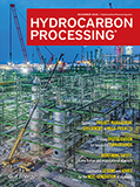June 2024
Environment and Safety
Alarm rationalization at Kuwait National Petroleum Company (KNPC) refineries
The national oil refining company of Kuwait has two state-of-the-art refineries: Mina Abdullah (MAB) and Mina Al-Ahmadi (MAA).
This is a preview of our premium content. Thank you for your interest—please log in or subscribe to read the full article.






Comments